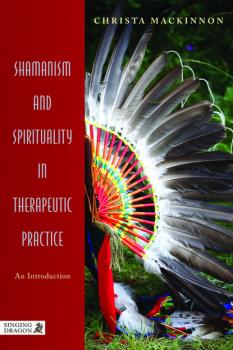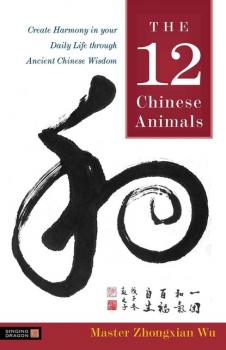Эзотерика
Различные книги в жанре ЭзотерикаPrinciples of the Enneagram
Still the definitive introduction to the Enneagram, this revised and updated edition covers all the key information on this curiously accurate system of knowledge about human personality. From its historical roots to how to use it in everyday life, the book encompasses all of the key aspects and principles of the subject. It explains the nine personality types, how they interrelate and how to recognise and understand your own and others' basic types. It also explores how the model can provide a lifelong guide that will encourage personal and spiritual growth, helping you to work with your personality's strengths and weaknesses to realise your true potential. The perfect introduction to a timeless topic, this book will be of interest to anyone who wants to understand more about the Enneagram, whether for personal application or general interest.
Shamanism and Spirituality in Therapeutic Practice
Increasing numbers of professionals in the fields of psychology and therapy are seeking to incorporate elements of spirituality into their therapeutic oeuvre, addressing not only mental and emotional issues, but also the soul. This book discloses how indigenous traditions can be adapted to offer practitioners a highly effective repertoire of insights, psycho-spiritual approaches and therapeutic tools. The underlying concepts and world-views of indigenous and contemporary shamanism are explained and tied in with current developments in psychology and science. After clarifying altered states of perception, concepts of integrative wholeness of mind, body, soul and spirit and transformative shamanic 'healing' approaches, the book goes on to outline concrete contemporary tools and techniques that can be applied directly to work with clients. It presents research, examples and case studies throughout. This will be enlightening and compelling reading for psychologists, therapists, counsellors and coaches looking for profound insights and innovative methods of practice that cater for the whole human psyche, reaching beyond contemporary Western mind and body approaches.
The Secret of Everlasting Life
The Secret of Everlasting Life is the first translation from the Chinese of the second-century Can Tong Qi. This ancient work, the earliest known text on transformation and immortality, echoes the wisdom and poetry of both the Tao Te Ching and I Ching. The Can Tong Qi is also the ancestral text of all Qi Gong exercises in China. This translation reveals for the first time the meditation methods practised for thousands of years by Taoist sages. Presented here with its original Chinese commentaries, the Can Tong Qi is full of practical information and advice about the process of human transformation and how to nurture and develop the natural life-energy within us. Richard Bertschinger's additional commentary explains the intricacies of Chinese allegory and symbolism for the Western reader. This book is an insightful read for anyone interested in Taoist thought, Chinese philosophy and culture, or Chinese medicine.
A Tai Chi Imagery Workbook
This innovative book makes the benefits of Tai Chi directly available to Westerners by communicating its essence in poetic, evocative, and humorous images that apply not only to movement practices of all kinds but to daily life. The book does not assume any knowledge of Tai Chi forms. The images in this book – drawn from a wide variety of sources, both Chinese and Western, ancient and modern – are easy to understand, fun to work with, and embody the true inner spirit of Tai Chi's timeless tradition. The book contains hundreds of photos and line drawings illustrating the images, detailed explanations of the biomechanical realities that underlie the images, and a summary of the latest scientific research on the benefits of Tai Chi.
The 12 Chinese Animals
* Silver Medal Winner in the 2010 BOTYA Awards Body, Mind and Spirit Category * The Chinese horoscope holds the key to a better understanding of self and others, and to living a life of harmony. Not just the year of birth, but also the month, day and hour have significance in true Chinese astrology. Master Zhongxian Wu explains how to find your power animal symbols, and how to learn from their wisdom. By fully understanding what each animal signifies, and how they relate to the major hexagrams of the Yijing, he shows that they can help you to find inner peace and live in harmony with family, friends, the wider community, and with nature. Using the wisdom of the twelve animal symbols as a guide, you will learn how to better understand your personality, and make choices that profoundly influence your health, relationships, career, and finances, allowing you to live up to your greatest potential. Making the wisdom of the twelve Chinese animals accessible to the Western reader for the first time in its relationship with the Yijing, this book will be an illuminating read for anyone interested in understanding themselves and their life patterns better, Chinese astrology, and the Yijing.
Truth Springs from the Earth
Rabbi Menahem Mendel of Kotsk (1787-1859) was one of the most interesting and challenging figures of Hasidism in the nineteenth century. His search for truth and battles against falsehood and spiritual compromise are the subject of many legends, hagiographical stories, and anecdotes. Though he was irascible and demanding, he inspired the loyalty of disciples who went on to become the dominant leaders of Hasidism in Poland from the middle of the nineteenth century to the destruction of Polish Jewry in the Holocaust. R. Menahem Mendel left no surviving writings. His descendants and disciples moved away from the radicalism of his teachings and adopted more conventional and conservative theological positions. As a result, there was little incentive to preserve and publish his teachings. The goal of this work is twofold. First, to present a biographical study of what is known about R. Menahem Mendel that is based on historical research, instead of repeating myths, legends, and stories without regard to their historical veracity. Secondly, to collect, translate, and analyze those teachings and sayings by or about R. Menahem Mendel that are consistent with what we know about his life and teachings, and are also accessible to a broader audience.
The Yoga Sutras of Patanjali
Yoga is an exercise and meditation philosophy that has been taking the United States by storm over the past several decades. Yet many are unaware that there is an entire, ancient religion that prefaces this phenomenon. Yoga is one of six orthodox schools of Hindu philosophy, and «Yoga Sutras of Patanjali» contains 196 aphorisms that form the basis of Raja Yoga. Patanjali uses his text to explain different facets of the philosophy, leading people to achieve kaivalya, the ultimate goal of detachment. The sutras begin with the most basic concentration, and then progresses to discipline, manifestation, and finally, emancipation of the transcendental ego. Patanjali also explains how one can find the path to kaivayla with the eight limbs of Yoga; non-violent thoughts, cleanliness, healthy living, meditation, and others are explained as essential actions to achieving self-liberation. Patanjali lived sometime between the 1st century BCE and the 5th century BCE. While all critics agree that Patanjali is the great compiler of the Yoga Sutras, many deliberate about whether or not he created the meditational philosophy. Some even speculate that Patanjali borrowed some of his sutras from other authors. Regardless, «Yoga Sutras of Patanjali» is now considered to be the leading authority on Yoga, and various editions are still in print over two-thousand years after the original publication.
A Series of Lessons in Gnani Yoga (The Yoga of Wisdom)
"The Yogi Philosophy may be divided into several great branches, or fields. What is known as «Hatha Yoga» deals with the physical body and its control; its welfare; its health; its preservation; its laws, etc. What is known as 'Raja Yoga' deals with the Mind; its control; its development; its unfoldment, etc. What is known as 'Bhakti Yoga' deals with the Love of the Absolute-God. What is known as 'Gnani Yoga' deals with the scientific and intellectual knowing of the great questions regarding Life and what lies back of Life-the Riddle of the Universe." So begins «A Series of Lessons in Gnani Yoga (The Yoga of Wisdom)» by Yogi Ramacharaka.
The Hindu-Yogi Science of Breath
"The Hindu-Yogi Science of Breath" is a manual on the science of controlling your breathing by Yogi Ramacharaka. Lessons and exercises can be found in the following chapters: Salaam, «Breath is Life.», The Exoteric Theory of Breath, The Esoteric Theory of Breath, The Nervous System, Nostril vs. Mouth-Breathing, The Four Methods of Respiration, The Yogi Complete Breath, Physiological Effect of Complete Breath, A Few Bits of Yogi Lore, The Seven Yogi Developing Exercises, Seven Minor Yogi Exercises, Vibration and Yogi Rhythmic Breathing, Phenomena of Yogi Psychic Breathing, More Phenomena of Yogi Psychic Breathing, and Yogi Spiritual Breathing.
The Science of Breath
First published in 1903, “The Science of Breath” is the first of many titles on yoga and Hinduism by the mysterious Yogi Ramacharaka. There are no official records of this author and many scholars believe that he did not exist and the name is instead a pseudonym for the true writer, William Walker Atkinson, the famed occultist and pioneer of the American New Thought movement. Regardless of the identity of the author, “The Science of Breath” is an in-depth and well-written guide on both the science and philosophy of breathing in yoga and contains numerous lessons and exercises that remain useful over 100 years after its publication. This manual on the science of controlling your breathing includes chapters on both the spiritual aspect to yoga and breathing, as well as on the practical aspect of how to include these concepts into your yoga practice. Chapters contain lessons on such important practices as nostril vs. mouth-breathing, the Yogi complete breath, Yogi rhythmic breathing, and Yogi spiritual breathing. Both experienced and beginner yoga enthusiasts will discover a treasure of useful advice in this thoughtful guide.









